Meeting Caption Transcription
Get transcripts based on meeting platforms' native captions.
Recall offers transcripts generated by native meeting captions for no additional charge. This transcription method may be particularly attractive for those looking for an economical solution for generating transcripts.
Pros:
- No additional charge
- Perfectly diarized: since the transcript is directly based on the underlying separated audio streams, you get perfect diarization out-of-the-box.
Cons:
- No per-word timestamps
- Can be lower quality depending on the meeting platform
- Language cannot be auto-detected
Platform Support
| Platform | Supported? |
|---|---|
| Zoom * | ✅ |
| Google Meet | ✅ |
| Microsoft Teams * | ✅ |
| Cisco Webex | ❌ |
| GoTo Meeting | ❌ |
| Slack Huddles | ❌ |
*Native Bots (Zoom) and Personal MS Teams not supported
Quickstart: Create a bot with meeting caption transcription
1. Start a meeting
Start instant meeting and copy the URL.
2. Configure and create the bot
Call Create Bot while providing the recording_config.transcript.provider with ameeting_captions object:
curl --request POST \
--url https://us-west-2.recall.ai/api/v1/bot/ \
--header "Authorization: $RECALLAI_API_KEY" \
--header "accept: application/json" \
--header "content-type: application/json" \
--data '
{
"meeting_url": "https://meet.google.com/sft-iwmv-eur",
"recording_config": {
"transcript": {
"provider": {
"meeting_captions": {}
}
}
}
}
'3. Speak for a bit
After the bot joins the call, talk for a bit with your mic unmuted and then end the call.
4. Fetch the transcript
Tip: Thetranscript.doneeventWhile you can receive meeting captions in real-time, if you just want to fetch the entire transcript after the call, you can do this after receiving the
transcript.doneWebhook Event.
Call the Retrieve Bot endpoint using the ID of the bot:
curl --request GET \
--url https://us-west-2.recall.ai/api/v1/bot/2e8ec5a4-a608-4ea0-b9d0-2a12aec3f0f0/ \
--header "Authorization: $RECALLAI_API_KEY" \
--header "accept: application/json"In the response's recordings, the bot's recording will have a transcript object in its media_shortcuts.transcript:
{
"id": "2e8ec5a4-a608-4ea0-b9d0-2a12aec3f0f0",
"recordings": [
{
"id": "c9d15f08-83a4-4d83-ad1b-3e311bb0f253",
"media_shortcuts": {
"transcript": {
"id": "b2c3c59f-45a4-43a8-9b0f-1bb79ba33580",
"data": {
"download_url": "https://us-east-1.recall.ai/api/v1/download/transcript?token=..."
},
"provider": {
"meeting_captions": {}
}
},
...
}
}
],
...
}Simply perform a GET request using the data.download_url to get the full transcript, which is in the following form (see Transcript download schema):
[
{
"participant": {
"id": 100,
"name": "Darth Vader",
"is_host": false,
"platform": "desktop",
"extra_data": null // Or an object, if the meeting platform provides extra data
},
"words": [
{
"text": "No, I am your father.",
"start_timestamp": {
"relative": 9.730066299438477,
"absolute": "2025-07-17T00:00:09.730066Z"
},
"end_timestamp": {
"relative": 12.751030921936035,
"absolute": "2025-07-17T00:00:12.751031Z"
}
}
]
},
{
"participant": {
"id": 200,
"name": "Luke Skywalker",
"is_host": false,
"platform": "desktop",
"extra_data": null
},
"words": [
{
"text": "No, that's not true.",
"start_timestamp": {
"relative": 13.263169288635254,
"absolute": "2025-07-17T00:00:13.263169Z"
},
"end_timestamp": {
"relative": 16.988412857055664,
"absolute": "2025-07-17T00:00:16.988413Z"
}
}
]
},
{
"participant": {
"id": 200,
"name": "Luke Skywalkeri",
"is_host": false,
"platform": "desktop",
"extra_data": null
},
"words": [
{
"text": "That's impossible!",
"start_timestamp": {
"relative": 20.384620666503906,
"absolute": "2025-07-17T00:00:20.384621Z"
},
"end_timestamp": {
"relative": 22.707609176635742,
"absolute": "2025-07-17T00:00:22.707609Z"
}
}
]
}
]
And that's it! You just created your first transcript using meeting captions 🎉
Take it a step further: WebhooksSince meeting captions are a method of Real-Time Transcription, you can also receive webhooks as the meeting transcript is generated.
Troubleshooting
Why did my meeting not produce any transcript via meeting captions when the video includes people talking?
It's likely that meeting captions were disabled for that meeting which prevented the bot from enabling meeting captions. You'll be able to tell this occurred if:
- In real-time - you receive a
bot.logwebhook status change event which includes logs like "Meeting host has disabled captions", "Zoom failed to enable captions", or "Zoom org has disabled captions"- This is sent out as soon as the bot discovers meeting captions can't be enabled which is at the very start of the call
- After the meeting has ended - the bot has meeting captions enabled but produces an empty transcript
If you encounter this, then you can:
- In real-time - call the Start Recording api with an AI transcription provider like Recall.ai Transcription. This will make the bot start transcribing the call with a different transcription provider
- Async - call the Create Async Transcript api with an AI transcription provider (again like Recall.ai Transcription). This will re-transcribe the meeting with an AI transcription provider
Zoom
Meeting captions are disabled in-meeting
If a bot didn't generate a when using meeting caption transcription, it's likely that the host had meeting captions disabled.
To allow participants to use meeting captions, meeting captions must be enabled. This setting persists across all Zoom meetings once it's set.
To enable meeting captions, navigate to Host Caption Control Settings while in a Zoom meeting.

Then, enable the setting called Allow Closed Captioning for this meeting
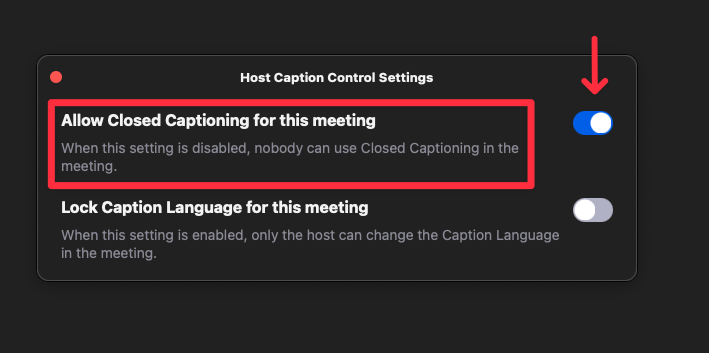
Meeting captions are disabled globally
If the user doesn't see an option to enable meeting captions in their Zoom client, they likely have the setting turned off globally.
To resolve this, simply go to Zoom settings and flip the toggle for Automated captions
Meeting captions can only be enabled by hosts
If a bot did not generate a transcript with meeting captions enabled in the Zoom settings, it is possible that permission to enable meeting captions is only granted to the Host/Co-host of the meeting.

To resolve this, simply go to Zoom settings and disable the toggle for Allow only the following users to enable captions for the meeting or webinar
Microsoft Teams
Live captions are disabled in meetings
If a meeting-caption-based transcript isn't being generated for Microsoft Teams, it's likely that the end user has closed captions disabled for their meetings.
This may also be set at the organization level, so if their setting is reflected appropriately they should check with their admin.
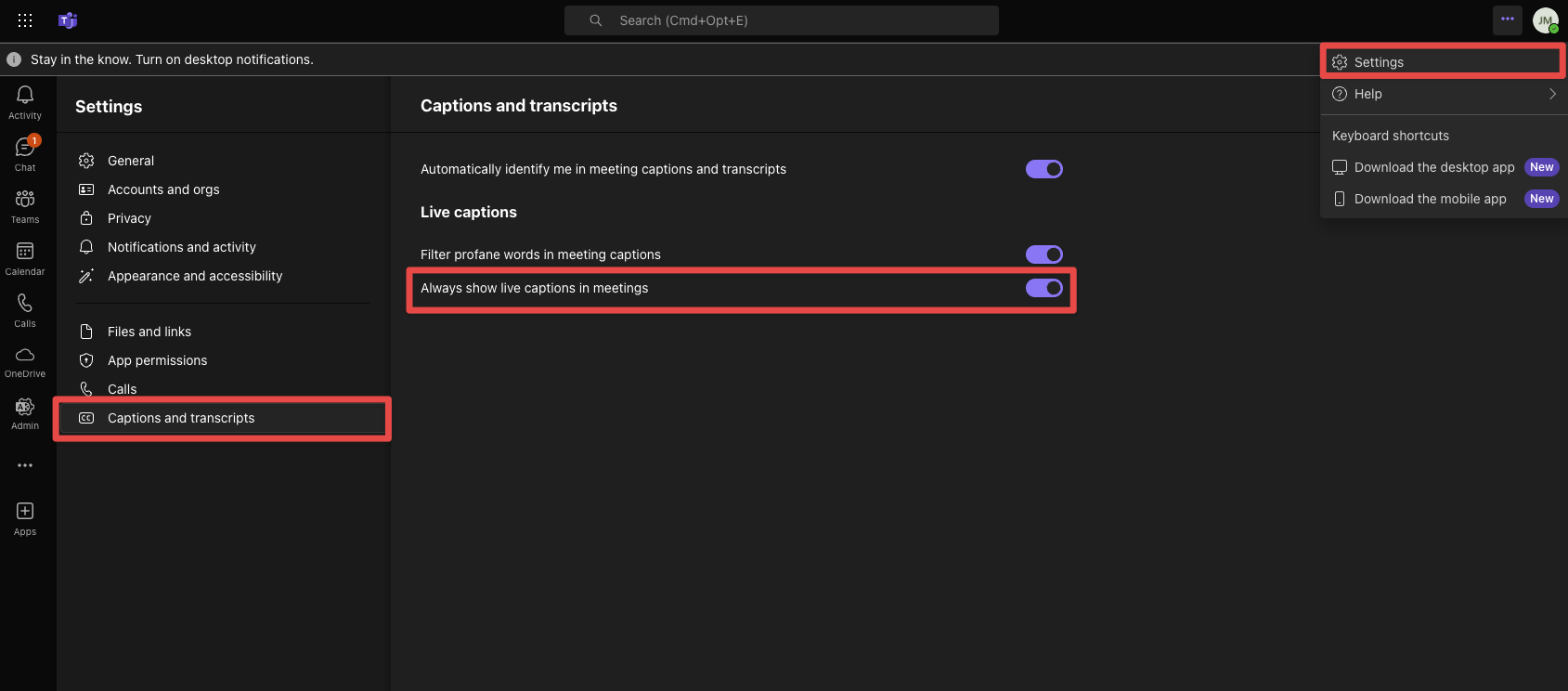
Enabling Microsoft Teams Closed Captions
This ensures Microsoft Teams bots can generate transcripts when using meeting_captions as the transcription provider.
Participant has disabled meeting captions identification
If a meeting-caption-based transcript is missing captions for some participants in Microsoft Teams, it's likely that the end user has disabled identification for their meeting captions and transcripts.
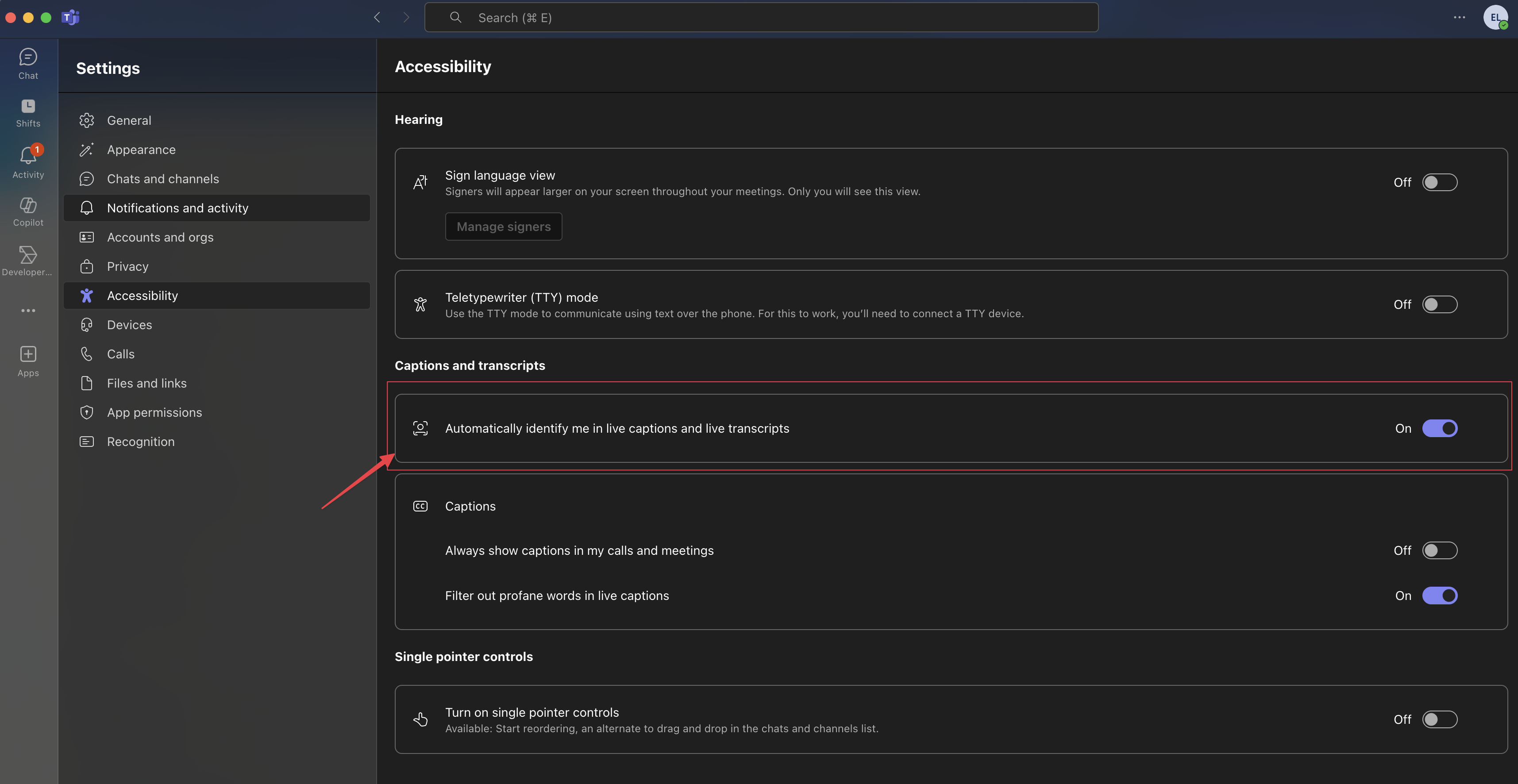
Ensure that this setting is enabled for all participants that you want to store captions for.
User enabled real-time text causes meeting captions to stop working
Enabling the Real-time text (RTT) feature in Microsoft Teams (as described here) causes captions to stop coming through. This will prevent Recall from capturing transcriptions
Language support
Meeting platforms' meeting captions currently don't support automatic language detection, and the language typically must be specified by either the host (Zoom/Microsoft Teams), or the end participant themselves (Google Meet).
Zoom
Zoom meeting captions are generated according to the language specified by the host.
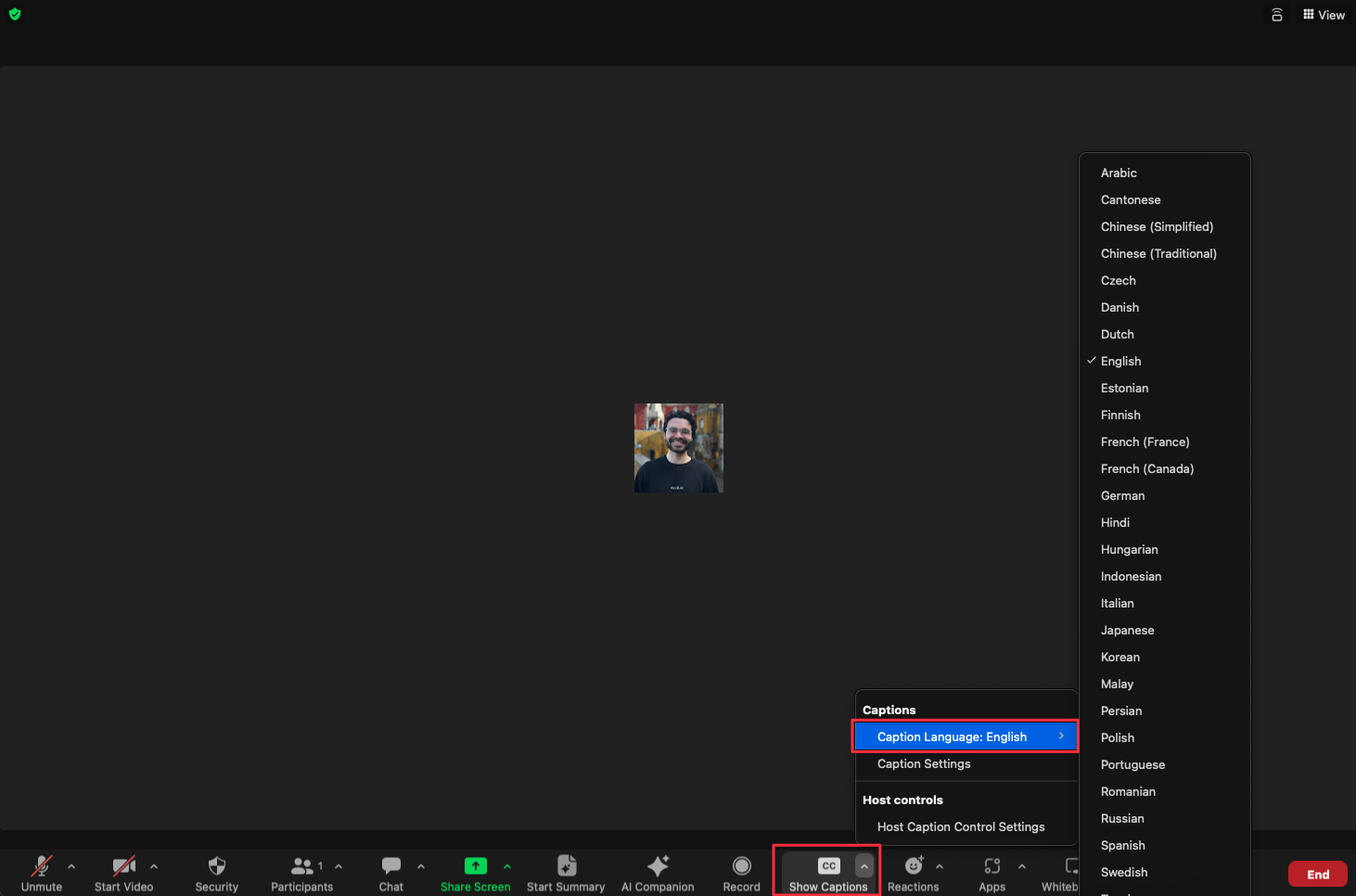
Zoom: Configuring meeting caption language Show Captions > Captions > Caption Language
Microsoft Teams
Microsoft Teams supports various languages for meeting captions by configuring these at the meeting-level by the host.
Caption settings > Language
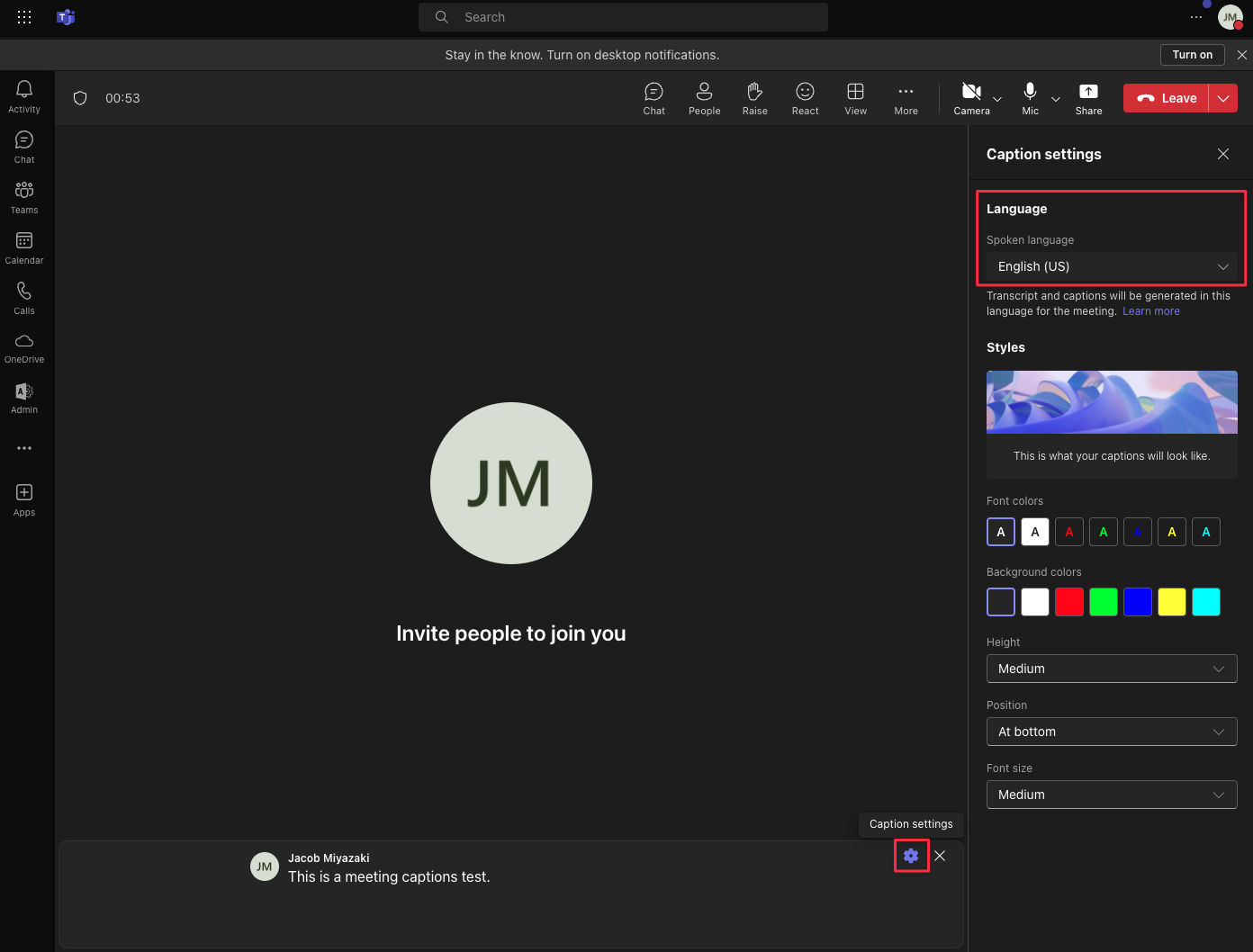
Microsoft Teams: Configuring captions language Caption settings > Language
Example
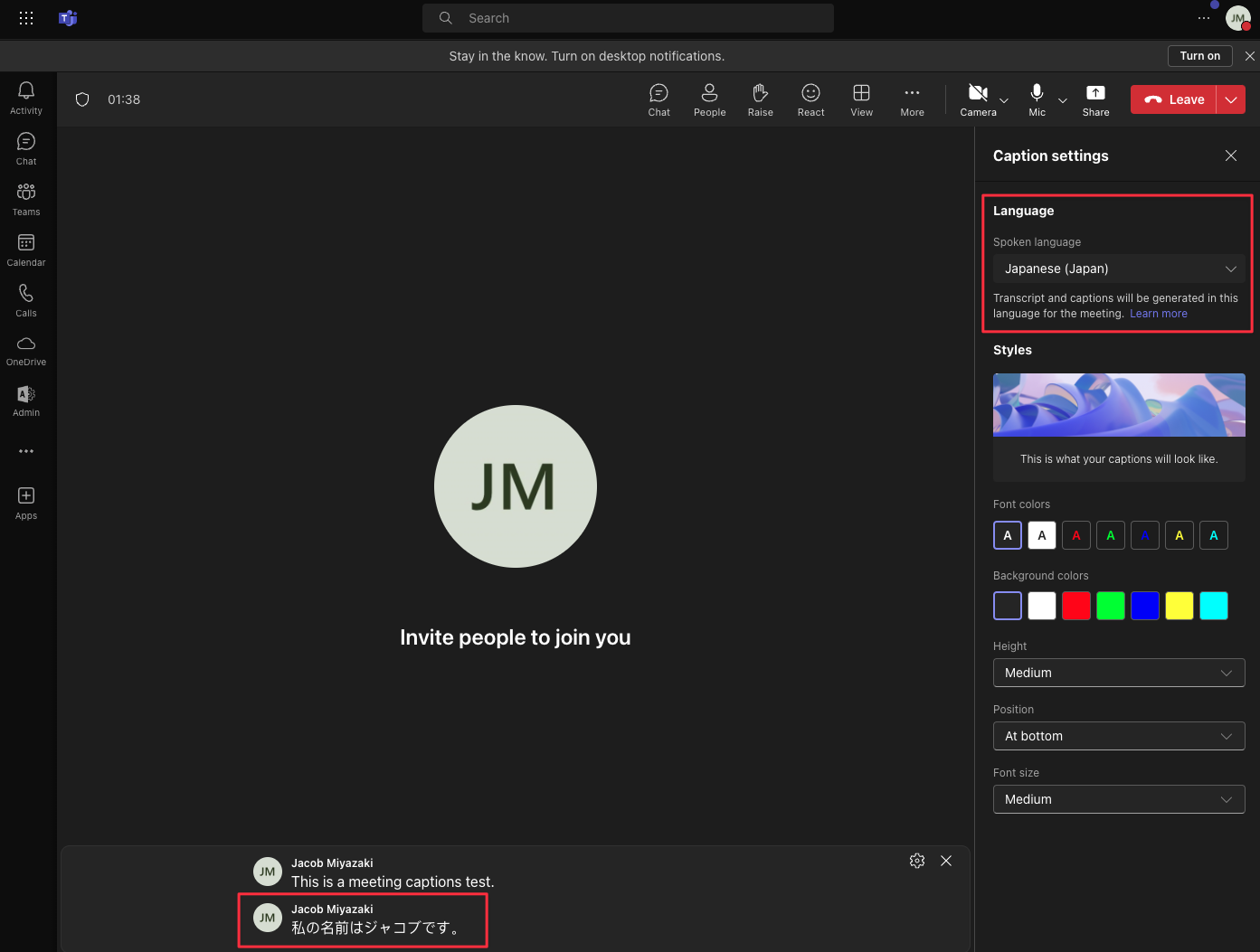
Teams Example: Meeting captions language updated to Japanese
Google Meet
Google Meet bots using meeting captions doesn't support languages other than english at this time
Updated 11 days ago